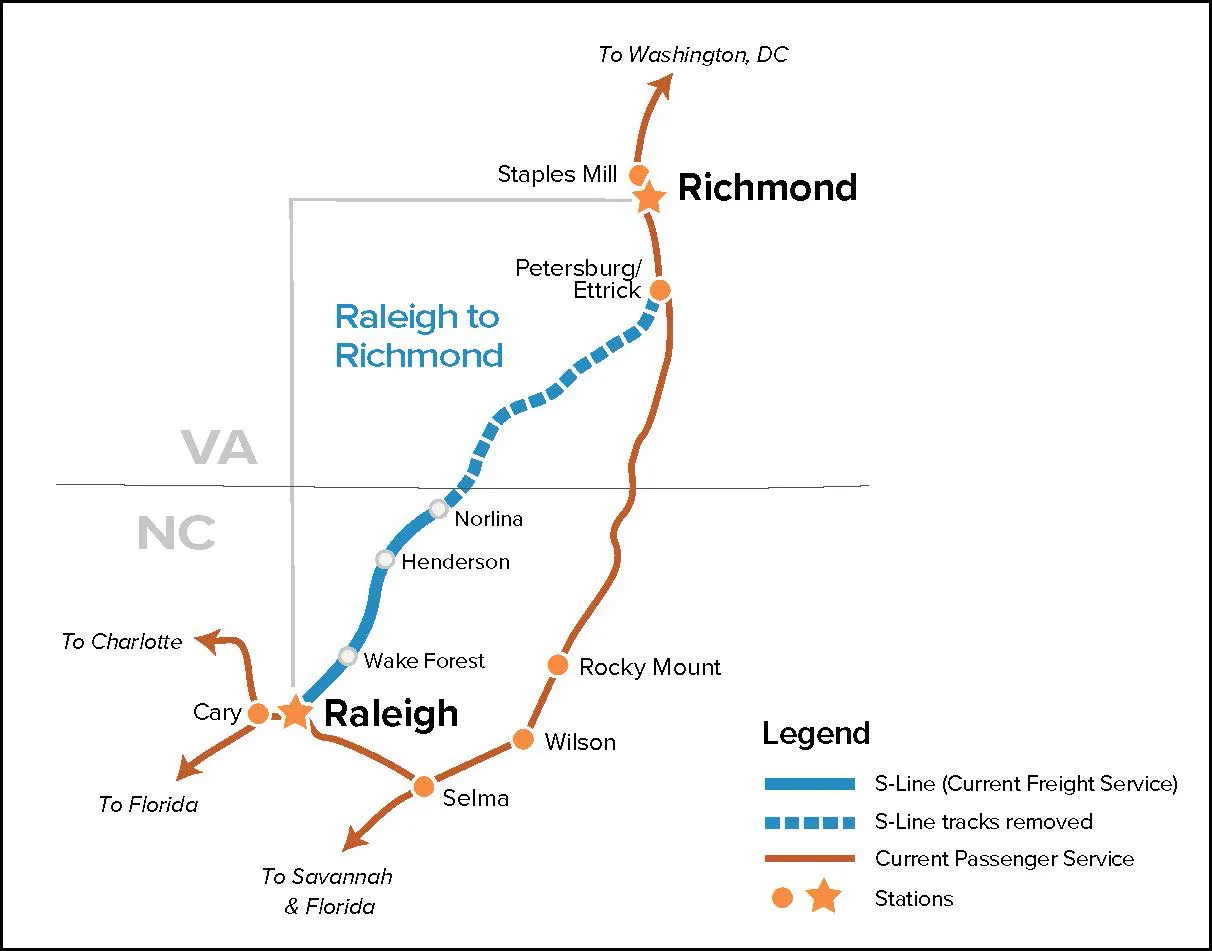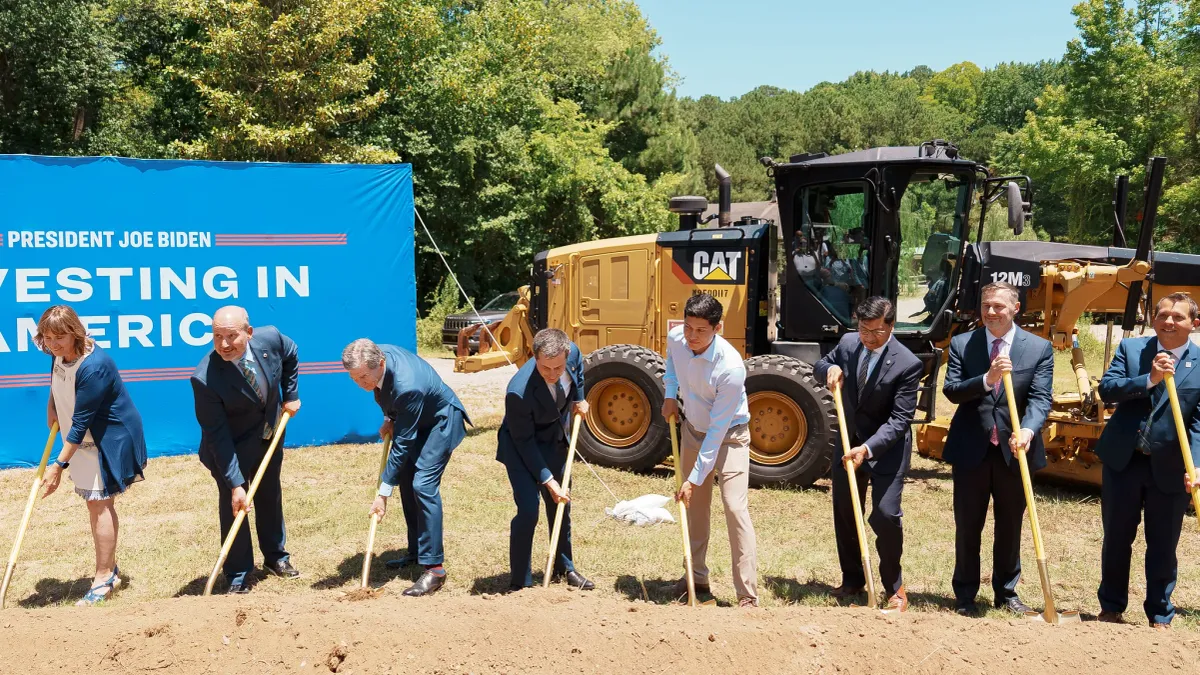Dive Brief:
- U.S. Transportation Secretary Pete Buttigieg, North Carolina Gov. Roy Cooper and other officials broke ground last week in Raleigh, North Carolina, on construction of a new passenger rail line along an existing freight rail corridor between Raleigh and Richmond, Virginia.
- Virginia purchased 75 miles of the right of way from freight railroad CSX in 2020. North Carolina is in the final stages of completing the acquisition of its portion of the corridor, known as the S-Line. The states have not set a date for when trains could begin running along the line.
- Portions of the route will allow train speeds of up to 110 mph, potentially saving more than an hour of travel time between the two cities, according to the North Carolina Department of Transportation.
Dive Insight:
Richmond and Raleigh are among the five busiest train stations in the Southeast, the Virginia Passenger Rail Authority said in a Feb. 28 press release. The S-Line project is among the two states’ ambitious plans to expand intercity passenger rail. Last December, the U.S. Department of Transportation awarded grants to the North Carolina DOT from the federal Corridor Identification and Development Program for seven corridors. Three radiate out from Charlotte, three from Raleigh, and one would connect Asheville and Salisbury, North Carolina.
“The roads are just as congested as they were before [the COVID-19 pandemic],” said Mike McLaughlin, chief operating officer at the Virginia Passenger Rail Authority, speaking about the growth of rail ridership in the region. Trains are “a much more convenient way to travel,” he said, noting that train travelers can work or watch a movie on their laptops and have access to the café car for food and beverages.

Virginia’s agreement with CSX allows higher-speed passenger trains where freight operations aren’t currently running, McLaughlin said. That would primarily be in the Petersburg, Virginia, area and across the state line to Ridgeway, North Carolina, he said. Once Amtrak’s new Airo train sets go into service, which is scheduled for 2026, McLaughlin said the trains could run faster and cleaner and save time compared with older Amtrak trains.
VPRA is also looking at where it could straighten portions of the route to allow higher speeds without impacting local homeowners. “If we can straighten and go faster, we will,” McLaughlin said.
The North Carolina DOT received a nearly $1.1 billion grant for the S-Line project. Amtrak and NC DOT will contribute an additional 20% in matching funds.











